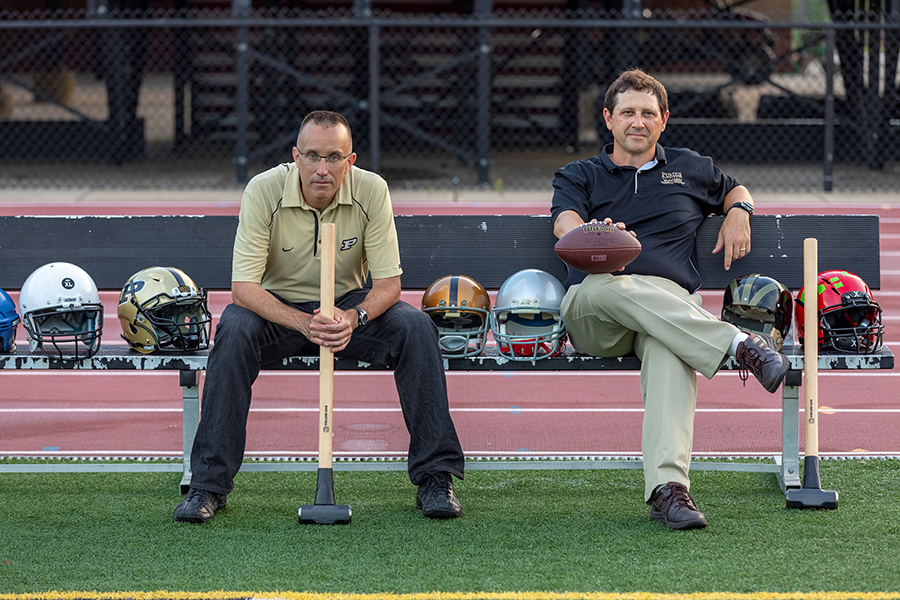Neurotrauma group draws attention of Chicago, other large-market media
The team, known as Purdue Neurotrauma Group (PNG), garnered positive publicity for its expertise and research in developing football helmet sensors to track the number and severity of head blows received by players.
Eric Nauman, professor of mechanical engineering, basic medical sciences, and biomedical engineering (by courtesy), and director of CoE’s honors programs, and Tom Talavage, professor of electrical and computer engineering and biomedical engineering as well as the founding co-director of Purdue MRI Facility, were referenced in an Aug. 2 Chicago Tribune article titled “NFL players say new helmet rule will be hard to enforce; neurologists agree, but say it’s still a good idea.”
The story discussed the NFL’s newly tightened rule on players using their helmets for hits, citing the high potential for devastating head injuries. The league says it will enforce player ejections for helmet blows determined to be egregious and unnecessary. According to the article, PNG’s sensors “can gauge the moment a player lowers his head – a reading that could help referees who must decide a call or league officials who are pondering a suspension.”

WLFI.com on July 25 posted the story ‘Research Group Looks to Decrease Sport Concussions,” quoting Nauman and Talavage about the importance of proper recovery time after a concussion to prevent further brain damage.
Inside Indiana Business taped a segment featuring Nauman and Talavage’s research that aired on Indianapolis television stations WFYI and WTHR on Aug. 3 and 4, respectively. The story highlighted that PNG now has design criteria for producing better protective equipment and hypotheses that could be directly tested to document ways to more safely play football and other collision-based sports.
On July 12,The Spring League, which conducts professional scouting events for elite football talent, published a story on its website announcing its partnership with PNG to reduce head injuries, saying, “Every player at #TSLShowcase will play with a sensor behind their ear to monitor head impact that will be used to evaluate if changes to rules will positively affect player health.”
PNG represented a collaboration at the event in San Diego with Dr. Paul Auerbach from Stanford School of Medicine to monitor athletes and determine how differences in play calling and lineman position might affect the number and/or magnitude of head accelerations experienced by players. Over the course of four days, 78 players were monitored. This included three days of practices and one exhibition scrimmage (80 plays). Preliminary analyses are currently under way.
Sources:
Herald & Review
WLFI.com
Inside Indiana Business
The Spring League
